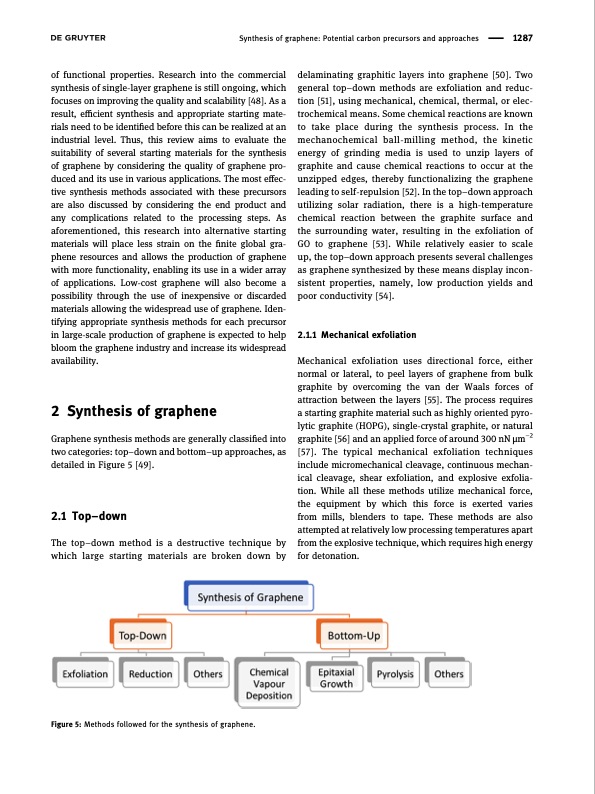
PDF Publication Title:
Text from PDF Page: 004
of functional properties. Research into the commercial synthesis of single-layer graphene is still ongoing, which focuses on improving the quality and scalability [48]. As a result, efficient synthesis and appropriate starting mate- rials need to be identified before this can be realized at an industrial level. Thus, this review aims to evaluate the suitability of several starting materials for the synthesis of graphene by considering the quality of graphene pro- duced and its use in various applications. The most effec- tive synthesis methods associated with these precursors are also discussed by considering the end product and any complications related to the processing steps. As aforementioned, this research into alternative starting materials will place less strain on the finite global gra- phene resources and allows the production of graphene with more functionality, enabling its use in a wider array of applications. Low-cost graphene will also become a possibility through the use of inexpensive or discarded materials allowing the widespread use of graphene. Iden- tifying appropriate synthesis methods for each precursor in large-scale production of graphene is expected to help bloom the graphene industry and increase its widespread availability. 2 Synthesis of graphene Graphene synthesis methods are generally classified into two categories: top–down and bottom–up approaches, as detailed in Figure 5 [49]. 2.1 Top–down The top–down method is a destructive technique by which large starting materials are broken down by delaminating graphitic layers into graphene [50]. Two general top–down methods are exfoliation and reduc- tion [51], using mechanical, chemical, thermal, or elec- trochemical means. Some chemical reactions are known to take place during the synthesis process. In the mechanochemical ball-milling method, the kinetic energy of grinding media is used to unzip layers of graphite and cause chemical reactions to occur at the unzipped edges, thereby functionalizing the graphene leading to self-repulsion [52]. In the top–down approach utilizing solar radiation, there is a high-temperature chemical reaction between the graphite surface and the surrounding water, resulting in the exfoliation of GO to graphene [53]. While relatively easier to scale up, the top–down approach presents several challenges as graphene synthesized by these means display incon- sistent properties, namely, low production yields and poor conductivity [54]. 2.1.1 Mechanical exfoliation Mechanical exfoliation uses directional force, either normal or lateral, to peel layers of graphene from bulk graphite by overcoming the van der Waals forces of attraction between the layers [55]. The process requires a starting graphite material such as highly oriented pyro- lytic graphite (HOPG), single-crystal graphite, or natural graphite [56] and an applied force of around 300 nN μm−2 [57]. The typical mechanical exfoliation techniques include micromechanical cleavage, continuous mechan- ical cleavage, shear exfoliation, and explosive exfolia- tion. While all these methods utilize mechanical force, the equipment by which this force is exerted varies from mills, blenders to tape. These methods are also attempted at relatively low processing temperatures apart from the explosive technique, which requires high energy for detonation. Synthesis of graphene: Potential carbon precursors and approaches 1287 Figure 5: Methods followed for the synthesis of graphene.PDF Image | Synthesis of graphene Potential carbon precursors

PDF Search Title:
Synthesis of graphene Potential carbon precursorsOriginal File Name Searched:
10-1515-ntrev-2020-0100.pdfDIY PDF Search: Google It | Yahoo | Bing
Salgenx Redox Flow Battery Technology: Power up your energy storage game with Salgenx Salt Water Battery. With its advanced technology, the flow battery provides reliable, scalable, and sustainable energy storage for utility-scale projects. Upgrade to a Salgenx flow battery today and take control of your energy future.
| CONTACT TEL: 608-238-6001 Email: greg@infinityturbine.com | RSS | AMP |